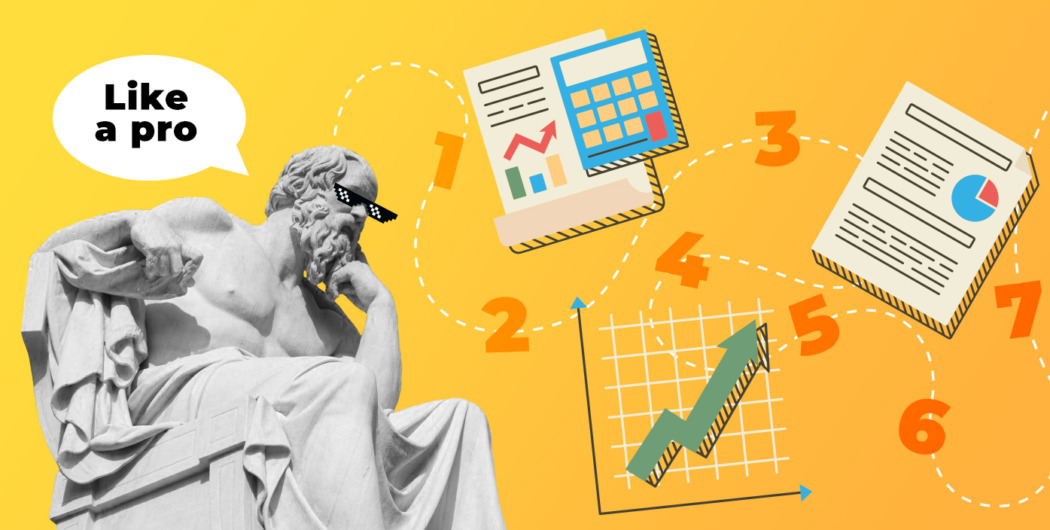

So, you’ve set aside some funds for trading. But now comes the difficult part — keeping the funds, let alone multiplying them.
“Amateurs think about how much money they can make. Professionals think about how much money they could lose.”
Jack Schwager, author of Market Wizards, The New Market Wizards, and Unknown Market Wizards, founder of Fund Seeder
There is a story about a trader who lost $200 million in 12 months and then made it all back in 3 hours. It may or may not have happened because no one can verify this. It could have been a trading desk in an investment firm, a hedge fund, or a billionaire trying their best. In any case, it reminds you of how harsh the market can be.
While there are no methods that work 100% of the time, there are general rules that will help you minimize the chance of losing your entire budget on the first try. This article will discuss seven of them.
1. Focus on asset allocation and portfolio diversification
By choosing a variety of assets, you can lessen the impact of major market swings on your overall portfolio. You should choose an allocation with balanced risks across sectors — if one asset class falls, the other ones will not. Thus, you will spread out potential gains and losses and minimize the chance of losing it all.
Imagine the opposite scenario. You purchase a stock and expose yourself to single-security risk. What if the company goes bankrupt the same day you buy the shares? Right, you lose everything on the first day.
2. Stick to the 1% rule
The 1% rule states that you should never put more than 1% of your capital into a single trade. So, you never risk losing more than 1/100 of your trading account per position. For example, if your trading budget is $1,000, don’t place more than $10 on a single asset. If you feel extra certain about your position, you can stretch the rule to 2%, but not more than that.
The powerful beauty of this rule is if you follow it precisely, you’d need to make dozens of consecutive bad trades before you lose everything (which is highly unlikely for a single day).
3. Set stops and limits
Predetermined exit points allow you to leave before the situation escalates. Suppose you bought a stock, expecting it to increase in value per share. If things don’t go as planned (e.g., the price broke below support), you can limit the loss to just 10% or whatever level you choose. In any case, you won’t lose the entire trade value, even if the price goes to zero.
Experiment with guaranteed stops and limit orders (to lock in possible returns, too).

4. Don’t use leverage (at least, not on the first day)
While trading on leverage can have benefits, the potential downsides (magnified losses) are not something you should risk on the first day. When you’re trying to minimize risk as much as possible, leverage is the last thing that should be applied.
When your trading account starts seeing more gains, you can apply leverage of an optimal size. But this should be done when you have more funds to lose and when increased losses will not result in a margin call.
5. Avoiding unclear trade setups
This rule can be interpreted in two ways: don’t use trading setups you don’t understand and don’t trade if you get mixed signals. The first one is clear — if your trading system is too complex for your level of skill and knowledge, consider the position lost.
The second one describes the signals you get from trading indicators. For example, if you get buy signals from volume indicators but nothing from moving averages, it’s better not to enter. Traders are recommended to use several indicators at once and wait for confirmation.
6. Set up news alerts
Analyzing and forecasting don’t prepare you for sudden market shifts. To make sure you’re not caught off guard, keep track of important events in relevant markets. In addition to general news, come up with certain criteria that will trigger your personal notifications.
Even though you’re unlikely to have a devastating trade if you set your stops, real-time updates can still be beneficial. For instance, you can create watch lists and enter positions when they match your desired setup. There is a higher chance to lose on a trade if you enter blindly.
7. Know when to stop
Don’t expect to be a big winner on the first day. Most experienced traders prefer a bigger number of smaller trades so that the extra income can add up over time. The moment you reach your daily goal, you should close the terminal and wait for the next day (or some other session, depending on your trading schedule). The same goes for your daily loss cap — if you reach a certain level of losses within a day, don’t try to compensate for it immediately.
Depending on your trading style, you may need additional rules to keep your funds as safe as possible. For example, if you’re an intense, high-frequency trader, you’ll need advanced monitoring tools. The rules above are just the basis for a solid risk management system. As you get more familiar with the markets, you’ll be able to adapt and gradually develop your own rules.







